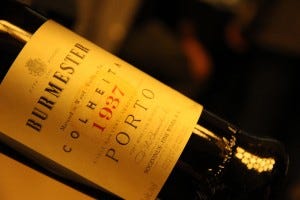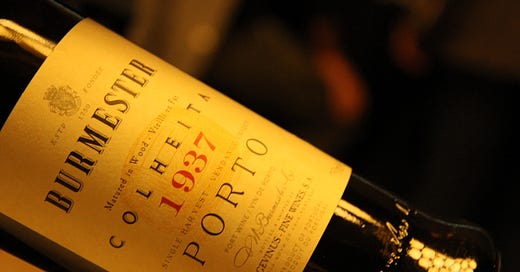Delicacy of a bygone age: Tasting Colheita Ports in Lisbon

Man of the match: Burmester Colheita '37
What do you associate with Christmas? As far as drinks go, it may be the only time of year when some uncork a sherry or a port. And if it's port, we Brits seem to have an overriding obsession with the crusted styles - that is, bottle-aged ports, either true "Vintage" or late bottled vintage (a younger style bottled shortly before it goes on sale). Of course, industrial quantities of much lowlier ruby port will also be consumed. Me? I prefer the gentler, subtler charms of an old Tawny (wood aged ) port.
But there's another wood-aged style, even less well known in the UK, perhaps because the Portuguese are quite happy to keep it to themselves. Colheitas are tawny ports from a single year, rather than standard tawnies which are blended across vintages for consistency. They can age almost forever, and have a delicacy and complexity that is unrivalled by any other style. I was privileged to taste a range from over the last 150 years at this year's Ad…
Keep reading with a 7-day free trial
Subscribe to The Morning Claret to keep reading this post and get 7 days of free access to the full post archives.




